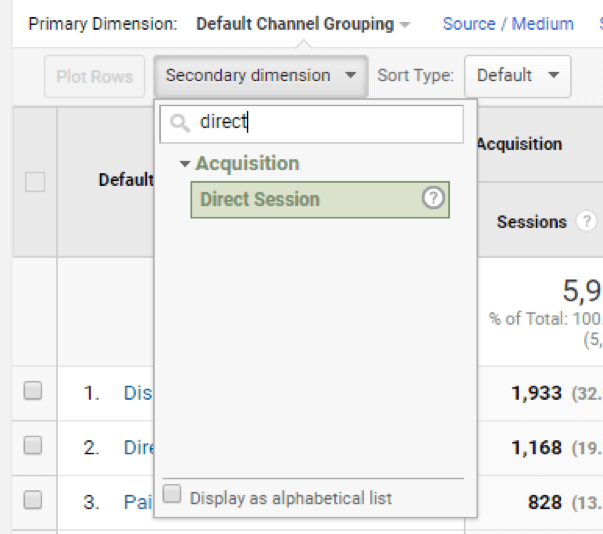Mastering Secondary Dimension in Google Analytics: A Total Guide
Mastering Secondary Dimension in Google Analytics: A Total Guide
Blog Article
Unlock Deeper Insights With Second Dimension in Google Analytics
With the substantial stretch of data offered in Google Analytics, the usage of second dimensions can considerably improve your analytical capacities. These extra layers of information use a nuanced viewpoint that can brighten intricate information within your main metrics. By tactically including additional dimensions into your evaluation, you can discover beneficial understandings that might otherwise continue to be undiscovered. The capacity to dissect and analyze user habits with higher precision opens up a realm of possibilities for boosting and enhancing approaches efficiency.
Recognizing Key Vs. Secondary Measurements
When evaluating data in Google Analytics, it is vital to differentiate in between second and main measurements to get much deeper understandings into user actions. Key dimensions are the primary classifications whereby you can see your data, such as device, touchdown, or source/medium web page. These measurements provide the basic framework for arranging and recognizing your data. On the other hand, second measurements permit you to more dissect your key dimension information. By including an additional measurement, you can layer on extra info to your main measurement, allowing a much more granular analysis. For instance, if your primary measurement is the source/medium through which users arrived on your website, including a second measurement like geographic location can expose where those customers are situated geographically. When looking at the key measurement alone, this added layer of details can help you identify trends, patterns, or abnormalities that may not have actually been evident. Leveraging both main and additional dimensions in Google Analytics is important for comprehensive data evaluation and notified decision-making.
Making Use Of Second Dimensions Properly
By integrating secondary measurements together with key measurements, marketers and experts can delve deeper right into the specifics of individual communications on their internet sites. Second measurements enable users to section and filter key measurement data additionally, offering a much more in-depth sight of individual communications, habits, and demographics.
Additionally, second dimensions enable users to compare and contrast various information factors within a solitary report, assisting in a much more detailed evaluation of customer behavior patterns. By leveraging secondary dimensions effectively, services can discover covert understandings, enhance their marketing approaches, and boost the overall user experience on their websites.
Discovering Usual Secondary Measurement Combinations
To even more examine user actions and trends in Google Analytics, it is valuable to explore usual combinations of second measurements. Some common additional measurement combinations that give valuable insights include examining web traffic sources with individual locations to recognize where internet site visitors are coming from geographically and how they discovered the site. Analyzing individual actions metrics with second dimensions such as demographics or interests can help in targeting specific target market sections extra efficiently.
Using Secondary Measurement in Custom Reports
Using secondary dimensions in personalized records enables a more thorough analysis of information in Google Analytics, improving the depth of understandings acquired. When producing customized records in Google Analytics, integrating second dimensions can provide an extra comprehensive view of just how various measurements engage with each other. This function makes it possible for users to delve deeper right into their information and discover important correlations that may not be promptly obvious.
By using additional dimensions navigate to this site in customized records, users can obtain a far better understanding of their website or application traffic. Combining the key dimension of "source/medium" with the secondary dimension of "landing page" can reveal which landing web pages are performing best for web traffic coming from specific sources. This understanding can help marketing professionals enhance their campaigns and improve total conversion rates.

Enhancing Information Visualization With Secondary Dimension
When discovering data in Google Analytics customized reports, incorporating secondary dimensions not only supplies an extra in-depth analysis but likewise enhances the graph of link understandings with data visualization. By including an additional measurement to your reports, you can improve the means information is provided, making it easier to recognize patterns, fads, and relationships within your web site's efficiency metrics.
Second measurements can aid you section your information further, enabling a deeper understanding of customer habits and communications on your site. When trying to isolate certain variables that may affect your internet site's efficiency., this enhanced level of granularity can be particularly helpful.

Conclusion
To conclude, leveraging second measurements in Google Analytics permits a more detailed evaluation of information, resulting in much deeper understandings and even more informed decision-making. Secondary Dimension in Google Analytics. click this By adding extra layers of information to key data collections, experts and marketing experts can discover hidden trends, patterns, and correlations that give a granular view of user behavior and communications. This improved level of understanding enables optimization of campaigns and tailored strategies for certain target market segments, eventually boosting performance and conversion rates
On the various other hand, additional dimensions permit you to additional explore your key measurement data. By including an additional measurement, you can layer on additional details to your main measurement, enabling a more granular analysis. If your primary measurement is the source/medium through which users got here on your site, adding a secondary dimension like geographic place can disclose where those users are situated geographically. By incorporating additional measurements alongside key dimensions, analysts and marketing experts can dig deeper right into the specifics of customer interactions on their web sites. Secondary measurements permit customers to sector and filter key measurement information further, supplying a much more thorough sight of individual behaviors, interactions, and demographics.
Report this page